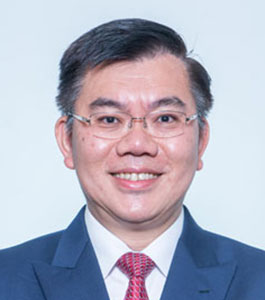Beyond Immunity: Researches Uncover How Microglia Affect Learning And Memory

by Dr Khor Ing Wei
Dean’s Office
A decade ago, scientists showed that microglia, the immune cells of the nervous system, contribute to inflammation in neurodegenerative diseases such as Alzheimer’s disease (AD) and Parkinson’s disease (PD).1,2 Now, researchers from the Departments of Anatomy and Physiology at NUS Medicine have discovered another role for microglia in neurodegenerative diseases, this time in the cognitive impairment aspect of these devastating conditions. The finding could help in understanding and treating dementia, which affects one in 10 people aged 60 and above in Singapore,3 and which accounts for $2.8 billion in healthcare expenses and informal caregiver costs in 2015 alone.4
Publishing in the prestigious journal Glia in November 2019, Associate Professor S. Thameem Dheen, Head of the Department of Anatomy and Assistant Dean of the PhD programme at NUS Medicine, his PhD student Genevieve Saw, and colleagues showed that microglia influence long-term potentiation (LTP) in synapses (connections between neurons). LTP, in which a synapse is strengthened by repeated activation, is thought to form the basis of learning and memory in the brain. The researchers also demonstrated that microglia-mediated LTP is under the control of a protein secreted by the microglia themselves, phosphatidylinositol-3 kinase (PI3K). PI3K is also a major player in many cellular processes, including cell growth, multiplication and survival.
Similar to immune cells in other parts of the body, when an injury occurs in the nervous system, microglia move quickly to the injury site and multiply. At the site, the microglia produce either pro-inflammatory or anti-inflammatory substances. Another interesting aspect of microglia is that they come into contact with synapses. For a while now, microglia were thought to play a role in LTP, but the mechanism by which they did so had not been worked out.
By studying cultured microglial cells as well as brain slices in a preclinical model, the researchers found that activated PI3K from microglia in turn activated another protein, protein kinase B (commonly known as AKT), triggering a series of events. These events culminated in increased levels of a protein called brain-derived neurotrophic factor (BDNF), which was previously shown to stimulate LTP. The investigators demonstrated that microglial PI3K was controlled by two processes: 1) changes to histones, the proteins on which DNA is wound like thread on a spool; and 2) sumoylation, or the addition of small ubiquitin-like modifier proteins (SUMO).
“Microglial cells were the neglected population in the brain once, but our findings showing the involvement of microglia in learning-associated neuronal plasticity sparked an interest in this cell type,” said A/Prof Dheen. “Further understanding of the function of these cells is important in determining the mechanisms of memory and learning in the healthy brain and memory impairment in the ageing brain.”
The identification of the mechanism by which microglia contribute to LTP, the mechanism underlying learning and memory, opens the door to potential new therapies for AD and PD. Given the many potential AD therapies that have turned into false hopes, such novel drug candidates are urgently needed in the treatment landscape.
Ms Saw echoed these thoughts about the impact of the work. “By identifying new targets at which we can potentially aim therapeutic interventions, we will have a higher chance of modulating neuronal function and plasticity, especially during senescence [ageing] or neurodegenerative diseases.”
REFERENCES
1 Sastre M, Richardson JC, Gentleman SM, Brooks DJ: Inflammatory risk factors and pathologies associated with Alzheimer’s disease. Curr Alzheimer Res. 2011;8:132-141.
2 Tansey MG, Goldberg MS: Neuroinflammation in Parkinson’s disease: its role in neuronal death and implications for therapeutic intervention. Neurobiol Dis. 2010;37:510-518.
3 Subramaniam M, Chong SA, Vaingankar JA, et al. Prevalence of dementia in people aged 60 years and above: Results from the WiSE Study. J Alzheimers Dis. 2015;45:1127-1138.
4 Woo LL, Thompson CL, Magadi H. Monetary cost of family caregiving for people with dementia in Singapore. Arch Gerontol Geriatr. 2017;71:59-65.
5 Saw G, Krishna K, Gupta N, et al. Epigenetic regulation of microglial phosphatidylinositol 3-kinase pathway involved in long-term potentiation and synaptic plasticity in rats. Glia. 2019;1-14.
